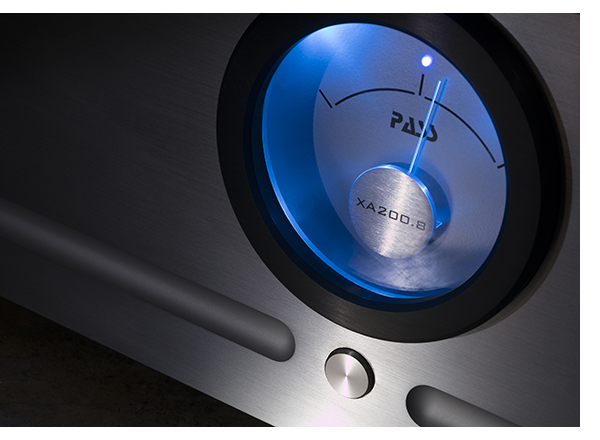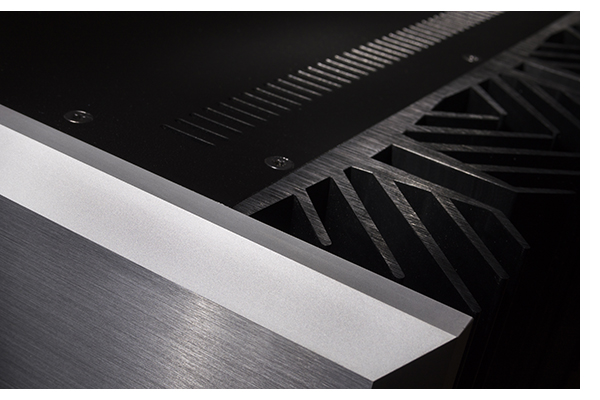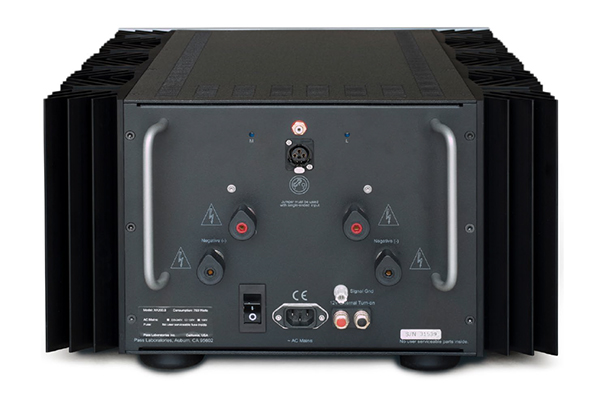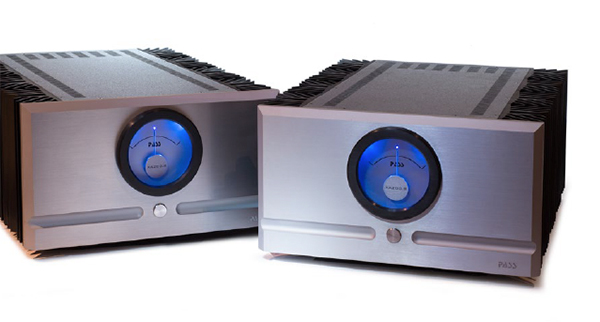The Pass Labs XA200.8 Monoblocks Closer to The Top
By Gregory Petan Over the past 20 years, it remains exciting to review such a range of products from so many unique audio manufacturers. Each new component provides a narrative of where the designer is in their creative process. Changing out components from one manufacturer to another is like changing the channel from one show to another featuring a whole new cast and a whole new plot line. Following the career of Nelson Pass, and his unique outlook always makes for engaging listening.
Over the past 20 years, it remains exciting to review such a range of products from so many unique audio manufacturers. Each new component provides a narrative of where the designer is in their creative process. Changing out components from one manufacturer to another is like changing the channel from one show to another featuring a whole new cast and a whole new plot line. Following the career of Nelson Pass, and his unique outlook always makes for engaging listening.
Though my first experience with Mr. Pass’ channel as a reviewer was with the X2.5 preamplifier, followed by the X350, X600, X350.5, XA200.5 amplifiers, the XP20 preamp, and finally the subject of this review. The Threshold SA150 power amplifier and FET 9 preamplifier were the first true high-end components I wrote checks for back in the early 1990s.
A Man With a Plan
If you follow Pass’ timeline, you realize he does not slap a new face plate on a modestly tweaked amp, jack up the price and call it a new model. A true innovator; Nelson Pass does not create a new product or range of products until he and his team have produced substantial sonic improvement.
Unafraid to explore and embrace different designs and topologies, Pass created the popular Aleph series in the late 1990’s to considerable acclaim. More recently the First Watt components, the X, XA and XS lines each offering keen insight into differing approaches, and sonic priorities. It was the introduction of the X series amplifiers, however, featuring the super-symmetry circuit in the X-1000 mono blocks in 1998 that launched Pass Labs into the forefront of modern amplifier design, hinting at what was yet to come.
The XA200.8 takes up a good deal of space. At 19” wide, 11” tall, 27.5” deep and weighing 157 lbs each, plan your system layout accordingly. Operating in class A up to 400 watts, the XA200.8s get warm but never blisteringly so. The new porthole style bias meter and simply beveled face plate have a clarity of design that escaped the fussier XA200.5. There are single-ended inputs which I have never used on any Pass amp and a pair of XLR inputs. There are two sets of great wing-nut style binding posts ideal for bi-wiring. The master power switch on the back brings the amp to life, and the large spring loaded button on the face plate brings the amp out of standby.
The Biggest .8
With the XA200.8s, the most powerful of the .8 series and right below the reference XS series, Nelson has reached a plateau occupied by those of the great classical sculptures. The ability to remove all the unnecessary material that surrounds the subject revealing the ideal hidden form defined the art of the day. As Michelangelo said; “I saw the Angel in the stone and carved until I set it free.” With this principle in mind, the XA200.8s embody this ideal to a greater degree than any Pass amp I have yet heard. Distortion is removed to such an extent; music is effortlessly rendered. That’s not to say there is no personality whatsoever, and all great artists have a recognizable touch. The indelible hallmarks of Nelson Pass’s designs are so artfully integrated into the XA200.8s that they no longer stick out separately from the music. Control, definition, smoothness and a tinge of tonal color let you know in the best way possible this is a Pass amp through and through.
I’m not sure why but it seemed to take longer for the XA200.8s to come into full voice than past Pass amps I have lived with; we are talking months. Perhaps my day to day responsibilities has cut into listening time protracting the process. Once readied, the XA200.8s impart a confidence that whatever music thrown its way will be handled with great ease. You will never hear someone say this or that genre of music sounds better than another through the XA200.8. Everything sounds great, all forms of music are presented completely just as they should be with little lacking, added, or otherwise deviant in the reproduction. Steadfast composure with such low levels of distortion and a seemingly infinitely scaled dynamic range paints a masterpiece of music reproduction allowing the listener to completely sink into the performance, freeing the mind to soak in more musical meaning.
Like the Pass amplifiers that came before, control and composure are terms that keep coming to mind in defining the XA200.8s. I made a mistake early in the review process of not dialing back the volume knob of the D’agostino Master Audio preamp when I switched from the lower level of my Triangle Art turntable and my D’Agostino phono preamp to the higher output Macintosh MB50 Streamer. I hit play on Disturbed’s “The Infection, ” and a literal explosion of sound ripped through the Sonus Faber Lilium speakers. I freakin jumped out of my skin, like a cartoon skeleton popping through my flesh but quickly realized the sound remained coherent within the mayhem. The soundstage remained clearly defined as did the timbre and texture of the instruments. It was way louder than I should ever listen if I hope to hang on to what’s left of my hearing yet the XA200.8s showed no ceiling to their competence, no limit to what they could handle.
For me, this is the big difference between the older XA200.5s and the new .8 version. Bass is tighter, faster and more clearly defined when stressed with the XA200.8. The entire musical spectrum has more “pop” with greater dynamic control and more sparkle and contrast where the XA200.5 was softer, with slightly less focus. I could live with the XA200.5 happily, but there is no doubt, the XA200.8 is the better amp.
There are several modern high-powered amps that approach the level of speaker control the XA200.8s provide, but few can spin as many sonic plates at once as the XA200.8s. With all the fury the XA200.8 is capable of so comes grace and purity. Wonderfully rendered tonal color and subtly preserved transients particularly in the treble gives music the life and spontaneity of a lower powered single-ended tube amp. The cymbals on Tommy Flanagan’s’ Sea Changes are entirely grainless and complex as I have heard from a recording. Getting this right requires an extremely low noise floor and lack of electronic haze and glare. Pass amps have always been pretty good in this regard, particularly the XA.5 series. The XA200.8s seems to have taken the smoothness of the XA200.5s and add a degree of sparkle and openness allowing for greater detail, illumination, and air.
The same level of improvements carries through the mid-band. Grainless, smooth, yet naturally textured and focused. Vocals and mid-band rich instruments of all stripes are locked in and stable. Always presented in perfect size and proportion within the stage, images are not too broad, not too small. Of course, image size and shape is recording dependent, but with familiar source material I can attest, the XA200.8s get it spot on.
The mid-bass and low-bass balance is an area many amps either lean out in favor of definition and articulation or bloats in favor of a spreading warmth. This can be appealing at first but grows tiresome as an omnipresent coloration. Here the XA200.8s exude neutrality, never draining the baby with the bathwater. From Stanley Clark playing a variety of bass instruments on East Riverside Drive to George Mraz’ exquisite phrasing on another Tommy Flanagan chestnut, “Nights At the Vanguard,” the XA200.8s never gives themself away, never imparting any lack of confidence that the amplifier is getting in the way of the music.
So What Makes Them Special?
Everything described above goes a long way to defining greatness. Sitting in the sweet spot soaking it all up is a wonderful treat, indeed. However, a recent experience listening way off axis, at my drafting board, working on a creation of my own re-contextualized my expectations. “December 1963 (Oh What A Night)” by the Four Seasons came on via the McIntosh MB50 streamer catching me off guard. This has always been a real favorite of mine, so the fact that I would enjoy this classic is not news. But After the first couple of notes, I stopped dead, dropped my pen and started to choke up, my voice cracking as I began belting out the lyrics. No imaging, no soundstage, none of the audiophile checklist items to speak of, just….Music- Soul stirring music. Can I attribute this magic moment directly to the XA200.8s? Yes, I can. These amplifiers don’t care where you are sitting, standing, dancing or otherwise. Their superb tonal balance and ease with which they pass the signal and their ability to control the speakers is beyond reproach and offer an intense connection to music regardless of your proximity to the system.
Priced at $44K per pair, one should expect excellence in the XA200.8 amplifiers. There is excellence, and there is excellence. With all the wonderful attributes mentioned above comes the fact that not one Pass product in all the years of my ham-fisted ambivalence, have I been able to abuse one into failure. Those who know me can attest that if a component is not seriously over engineered, I will find a way to choke the life out of it. Reliability or the lack thereof is a point not driven home enough in reviews, particular reviews of components as expensive as this. Nothing is more frustrating than a costly component biting the dust. In this regard, Pass Labs’ steadfast reliability is without peer.
Without hesitation, I could go the rest of my life and never feel the need to upgrade from the Pass XA200.8 amplifiers. That’s not to say I will never review another amplifier; it is my job after all. And it’s also not to say that I will never find another amplifier enjoyable. But if I were to get out of the biz of swapping gear and had to lay down my hard earned cash for a forever amplifier? I could not imagine another manufacturer more deserving of my business and another component worthier of my respect.
There’s not much more that I can add in sheer enthusiasm here. My ownership and enjoyment of Pass gear go back a bit further; I bought my first Threshold 400A power amplifier in 1982. I’ve been using Pass power amplifiers as reference components for about eight years now, but my experience has never been the same – I’ve yet to have a Pass component break on my watch. I don’t think I know anyone else that has either.
Having used the XS300 monos as my personal reference since they came on the scene, I must admit the new .8 series is beginning to close the gap; it’s not quite the chasm it used to be. For my money, if you have the dough, the XS300s are a lot better (as they should be) but where the XS300 left the 200.5s in the dust, There’s a lot more horsepower and finesse inside the .8 version. If you don’t have a world class everything, you won’t regret your decision to get a pair of XA200.8s. And Pass mentions their products having about a seven-year lifespan, so it wouldn’t surprise me in a couple of years if Mr. Pass comes up with something even more musical than the XS amplifiers to open that gap back up.
Comparing the 200.8s to the XS monos is one thing, comparing the 200.8s to everything else in their price category is another. You might dig that tiny extra bit of tubey-ness that a pair of tube monoblocks will give you, but it’s ever, ever so slight. I say this as a guy that has more than a few tube amplifiers here. I love the 200.8s because they give me all that lovely tonal saturation that I would get from a great tube amplifier, with all the grip and dynamics of a solid-state amp – without having to hunt down tubes. And for me, that will always be the awesomeness of Pass amplifiers, or as Nelson Pass has said more than once, “the sound of tubes without the hassle.”
It’s worth mentioning how well the 200.8s work with any source. I’ve used these monoblocks with about two dozen different sources, balanced and single ended with no problem. Using the Pass XS Pre and the Audio Research REF 6 (the only preamplifiers I have that sound equally good through the RCA and XLR outputs) with 20-foot runs of Cardas Clear cable, I could not notice any difference in sound quality. So rest assured, whatever your source it will partner up with these amps perfectly.
And it’s the same for the output. Whether using the most power hungry Magnepans, treacherous ESLs, etc., there was no speaker that the 200.8s had the least bit of difficulty with. I’ve never used an amplifier more benign in that sense than any of the Pass products. They are impervious to speaker and cable differences, making it all that much easier to hear said nuances. This is why I love using their amplifiers as a reference – they let everything else through.
The bottom line: another out of the ballpark hit for Pass Labs.






